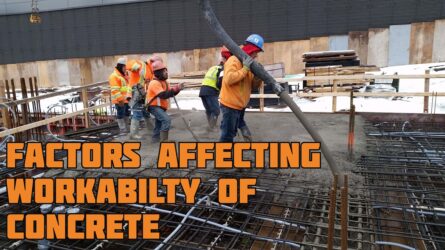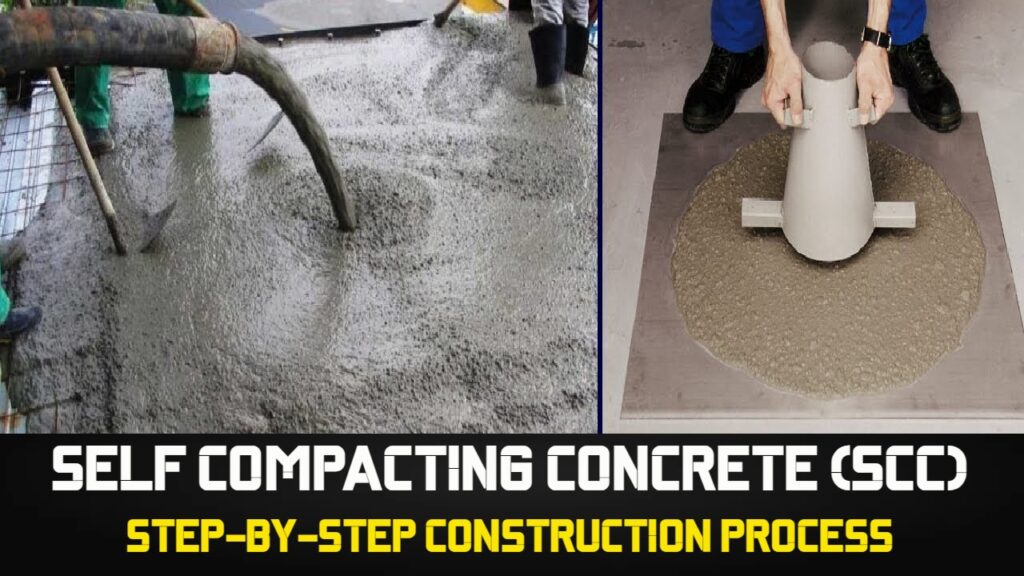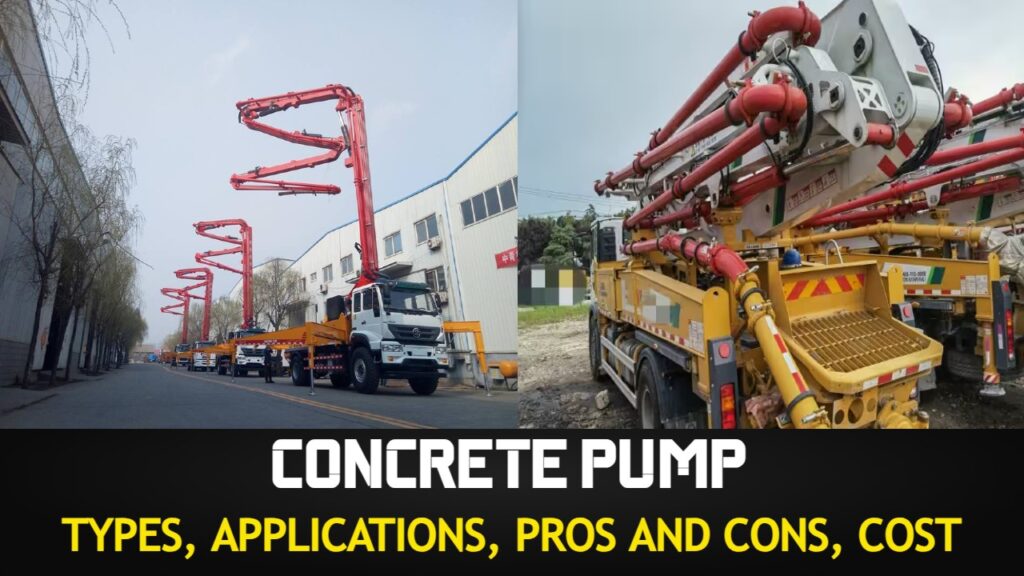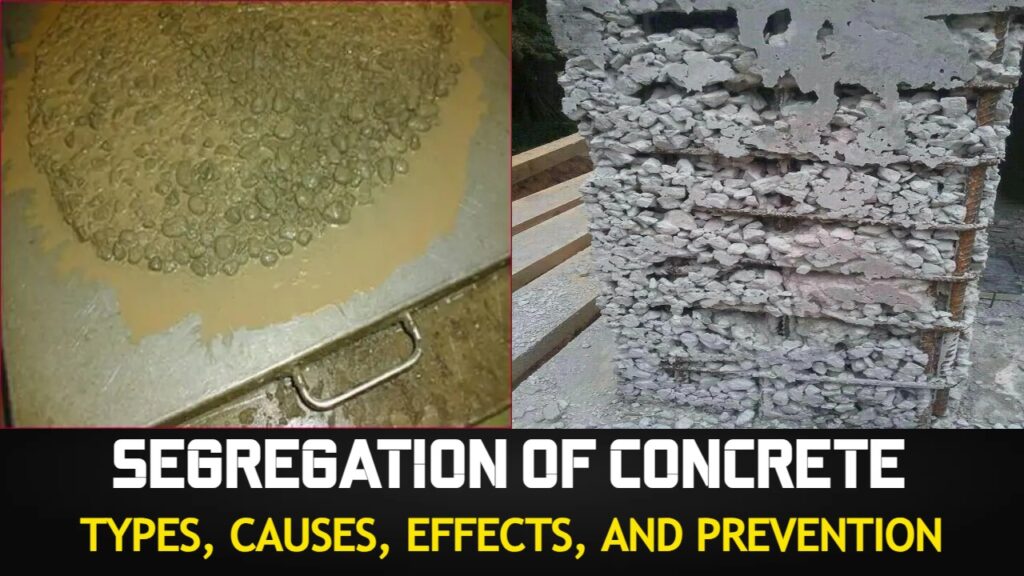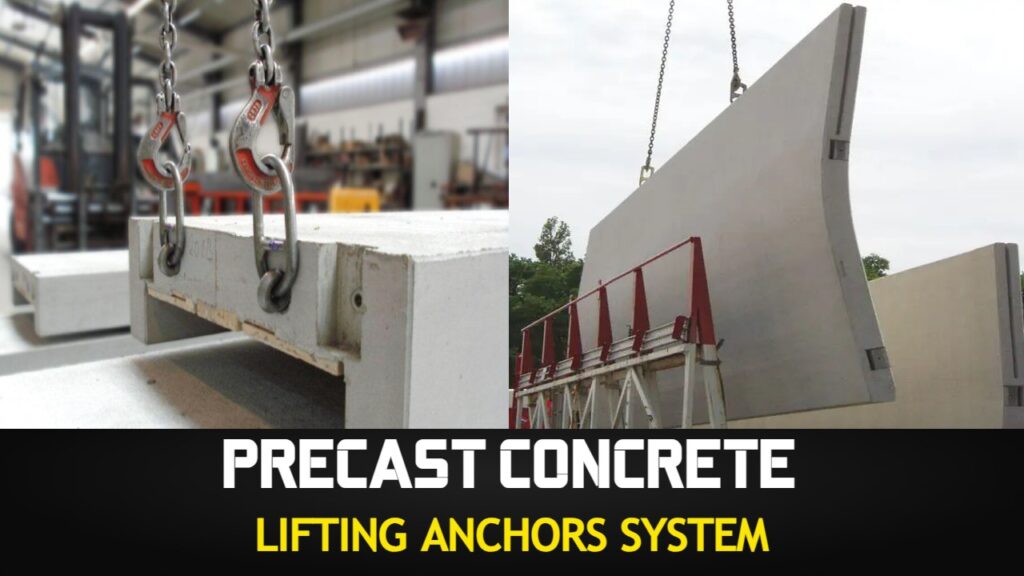Workable concrete is the one that exhibits very little internal friction between particle and particles are which overcomes the frictional resistance offered by the formwork surface or reinforcement contained in the concrete with just the amount of compacting efforts forthcoming.
The factors helping concrete to have a more lubricating effect to reduce internal friction for helping easy compaction are given below.
Contents
Factors Affecting Workability of Concrete
a) Water content
b) Mix proportions
c) Size of aggregates
d) Shape of aggregates
e) The surface texture of aggregates
f) Grading of aggregate
g) Use of admixtures
Water Content
Water content in a given volume of concrete will have significant influences on the workability. The higher the water content per cubic meter of concrete, the higher will be the fluidity of concrete, which is one of the important factors affecting workability.
At the worksite, supervisors who are not well versed with the practice of making good concrete, resort to adding more water for increasing workability. This practice is often resorted to because this is one of the easiest corrective measures that can be taken at the site.
It should be noted that from the desirability point of view, an increase in water content is the last record to be taken for improving the workability even in the case of uncontrolled concrete.
For controlled concrete one cannot arbitrarily increase the water content. In case, all other steps to improve workability fail, only as the last resource the addition of more water can be considered. More water can be added, provided a correspondingly higher quantity of cement is also added to keep the water-cement ratio constant so that the strength remains the same.
Mix Proportions
Aggregate/cement ratio is an important factor influencing workability. The higher the aggregate/cement ratio, the leaner is the concrete. In lean concrete, less quantity of paste is available for providing lubrication, per unit surface area of aggregate and hence the mobility of aggregate is restrained.
On the other hand, in the case of rich concrete with lower aggregate / cement ratio, more paste is available to make the mix cohesive and fatty to give better workability.
- Workability of Concrete in Civil Construction
- What is the Purpose of Concrete Mix Design?
- Self Compacting Concrete (SCC)
- Concrete – Definition Properties and Classification
Size of Aggregate
The bigger the size of the aggregate, the less is the surface area and hence less amount of water is required for wetting the surface and less matrix or paste is required for lubricating the surface to reduce internal friction. For a given quantity of water and paste, the bigger size of aggregates will give higher workability. The above, of course, will be true within certain limits.
Shape of Aggregates
The shape of aggregates influences workability in good measure. Angular, Elongated or Flaky aggregate makes the concrete very harsh when compared to rounded aggregates or cubical shaped aggregates. Contribution to better workability of rounded aggregate will come from the fact that for the given volume or weight it will have less surface area and fewer voids than the angular or flaky aggregate.
Not only that, being round in shape, the frictional resistance is also greatly reduced. This explains the reason why river sand and gravel provide greater workability to concrete than crushed sand and aggregate.
The importance of the shape of the aggregate will be of great significance in the case of present-day high strength and high-performance concrete when we use very low W/C in the order of about 0.25. We have already talked about that in the years to come natural sand will be exhausted or costly. One has to go for manufactured sand. The shape of crushed sand as available today is unsuitable but the modern crushers are designed to yield well shaped and well-graded aggregates.
Surface Texture
The influence of surface texture on workability is again due to the fact that the total surface area of rough-textured aggregate is more than the surface area of a smooth rounded aggregate of the same volume. From the earlier discussions, it can be inferred that rough textured aggregate will show poor workability and smooth or glassy textured aggregate will give better workability. A reduction of interparticle frictional resistance offered by a smooth aggregate also contributes to higher workability.
Grading of Aggregates
This is one of the factors which will have maximum influence on workability. A well-graded aggregate is the one that has the least amount of voids in a given volume. Other factors being constant, when the total voids are less, an excess paste is available to give a better lubricating effect. With an excess amount of paste, the mixture becomes cohesive and fatty with prevents the segregation of particles. Aggregates particles will slide past each other with the least amount of compacting efforts. The better the grading, the less is the void content and the higher the workability. The above is true for the given amount of paste volume.
Use of Admixtures
Of all the factors mentioned above, the most important factor which affects the workability is the use of admixtures. It is amply described that the plasticizers and superplasticizers greatly improve the workability of many folds. It is to be noted that an initial slump of concrete mix or what is called the slump of reference mix should be about 2 to 3 cm to enhance the slum many folds at a minimum dose.
One should manipulate other factors to obtain an initial slum of 2 to 3 cm in the reference mix. Without an initial slump of 2 to 3 cm, the workability can be increased to a higher level but it requires a high dosage – hence uneconomical.
The use of air-entraining agents being surface-active reduces the internal friction between the particles. They also act as artificial fine aggregates of a very smooth surface. It can be viewed that air bubbles act as a sort of ball bearing between the particles to slide past each other and give easy mobility to the particles. Similarly, the fine glassy pozzolanic materials, in spite of increasing the surface area, offer better lubricating effects for giving better workability.
You can also follow me on Instagram, Telegram and Facebook page. Because many small things, which are very important from interview point of view, it is not possible to put here, I put all that on Instagram, Telegram and Facebook page. You can take it from there. You will find the links of all social media below.
INSTAGRAM | TELEGRAM | FACEBOOK PAGE
